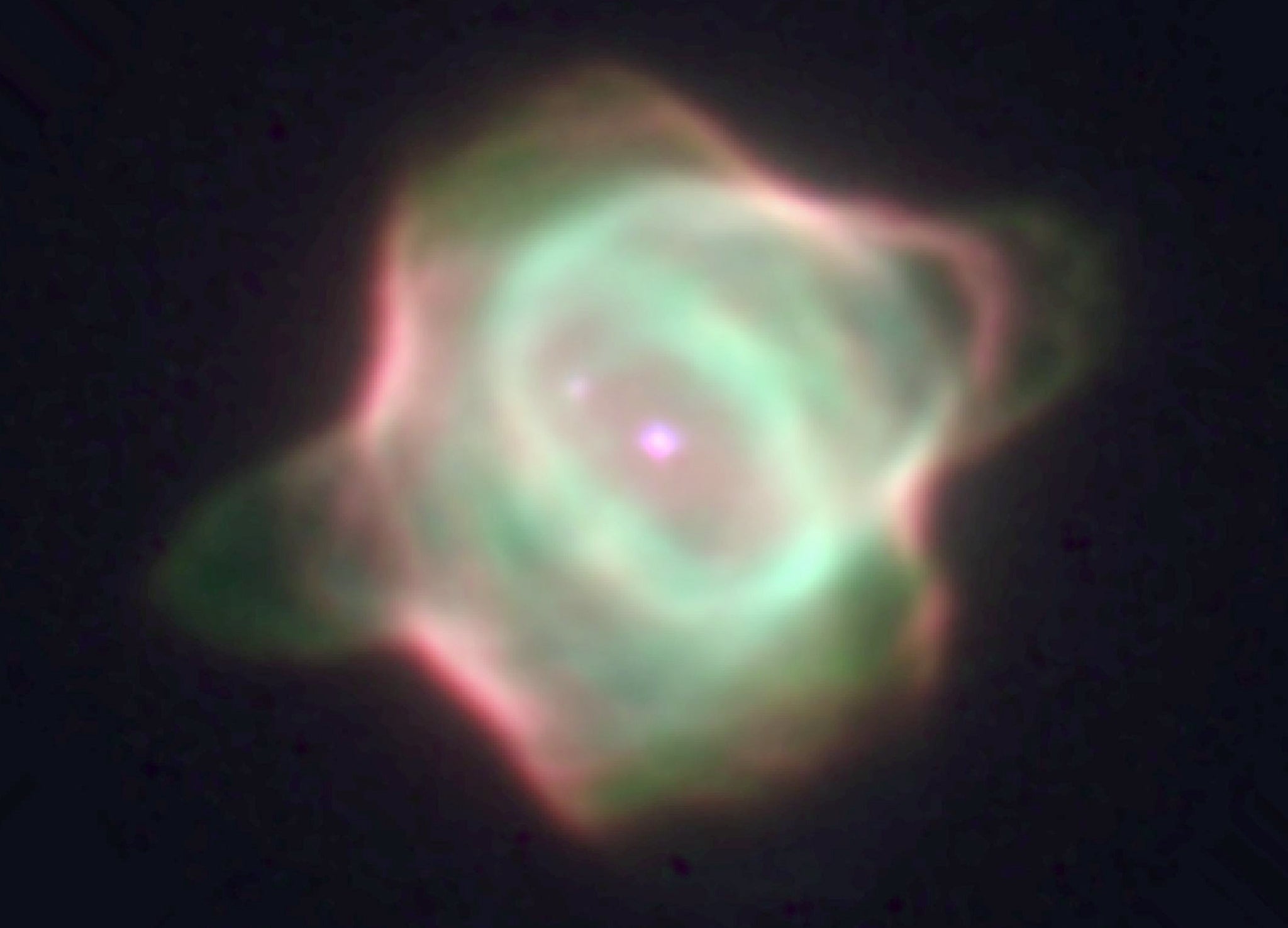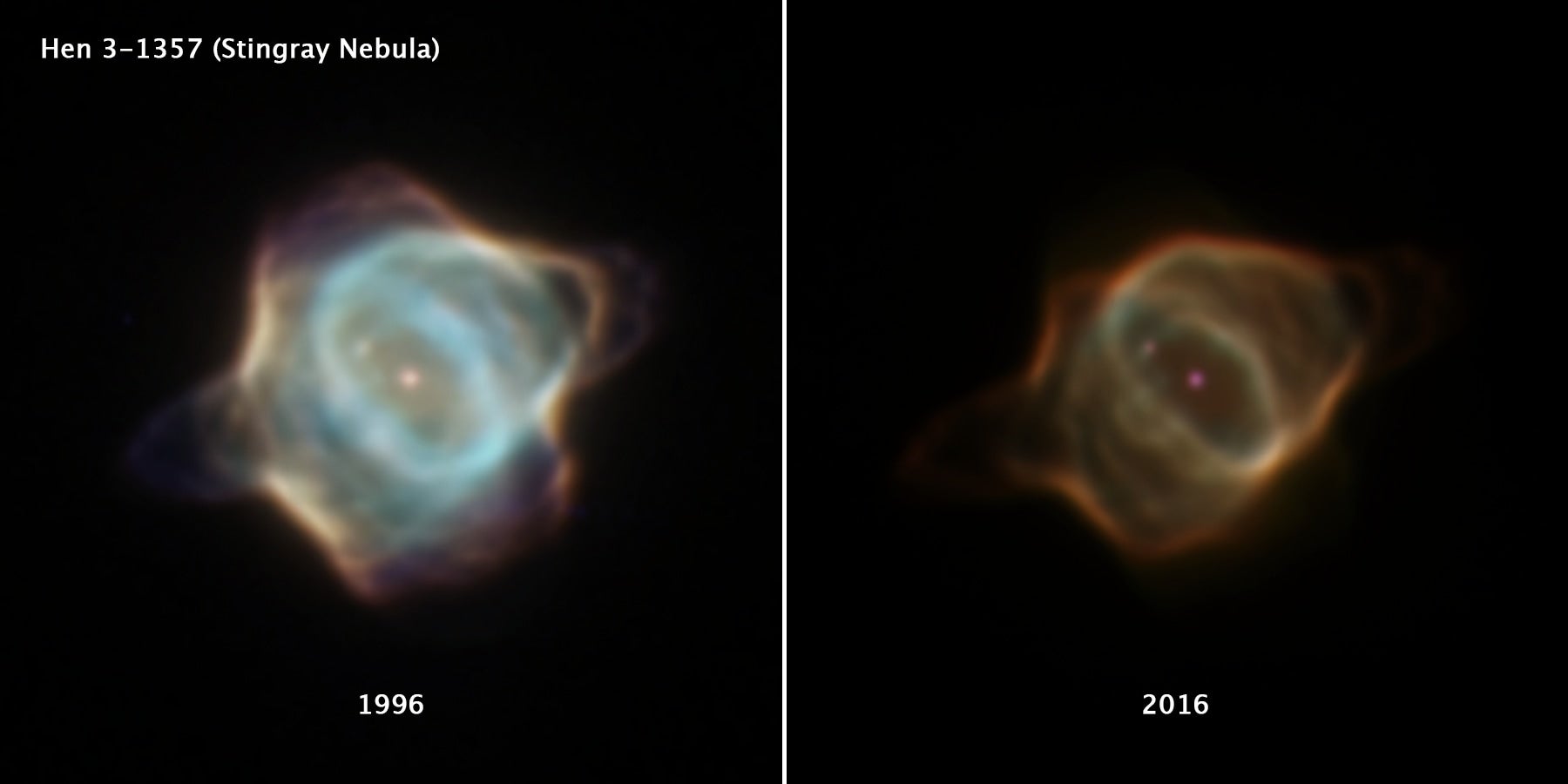Nasa spots ‘very dramatic and very weird’ fading of already unusual planetary nebula

An already strange planetary nebula has been spotted fading, in what scientists have said is "very, very dramatic and very weird" behaviour.
The Stingray nebula, a shroud of gas around an ageing star, was already unusual: it is by far the youngest such object in space.
But scientists say that it is now getting dimmer as rapidly as it appeared. Its brightness has dropped by a factor of nearly 1,000 over 20 years, and the bright tendrils that once wrapped around its edges are gone.
The nebula could be gone in 20 years, if the fading continues at the same rate, scientists say. And it was probably already on its way out when it was first spotted by the Hubble Space Telescope in 1996.
Images taken from that same telescope, and compared between 1996 and 2016, show that the nebula has become both much dimmer and lost the structure that it once had. The nebula – once bright and glowing against the black of the universe – is now itself dim and fades into its backdrop.

Such changes usually happen on a very long period, sometimes millions of years. As such, it is an unusual process and one that scientists are able to track as it happens.
"This is very, very dramatic, and very weird," said team member Martín A. Guerrero of the Instituto de Astrofísica de Andalucía in Granada, Spain. "What we're witnessing is a nebula's evolution in real time.
"In a span of years, we see variations in the nebula. We have not seen that before with the clarity we get with this view."
It is more than just the dimming that makes the behaviour of the nebula unexpected, the scientists say.
"This is an unprecedented departure from typical behavior for a planetary nebula," said lead author Bruce Balick, an emeritus professor of astronomy at the University of Washington. "Over time, we would expect it to imperceptibly brighten and expand, which could easily go unnoticed in a century or more.
"But here we're seeing the Stingray nebula fade significantly in an incredibly compressed time frame of just 20 years. Moreover, its brightest inner structure has contracted -- not expanded -- as the nebula fades."
The nature of the Hubble telescope means that researchers can be sure that the changes are the result of the dimming of the nebula, rather than changes in how the imaging works.
They appear to be happening because its central star – known as SAO 244567 – rapidly expanded due to a drop in temperature, and then began to emit less ionising radiation.

Join our commenting forum
Join thought-provoking conversations, follow other Independent readers and see their replies
Comments